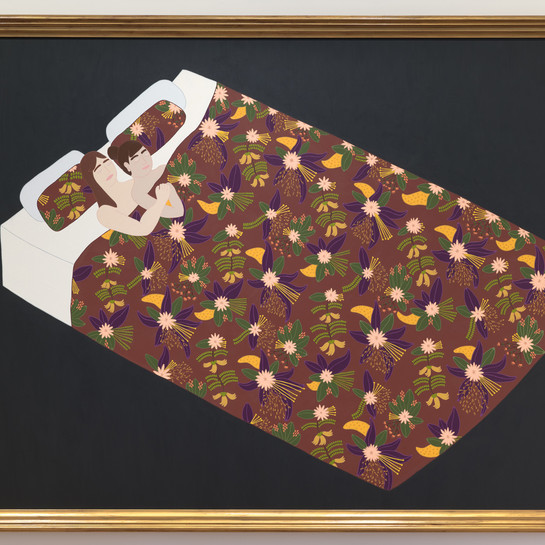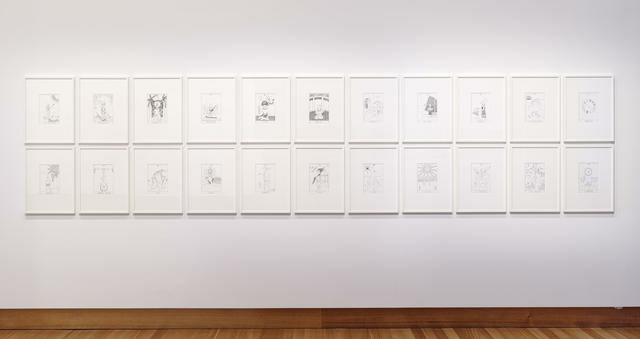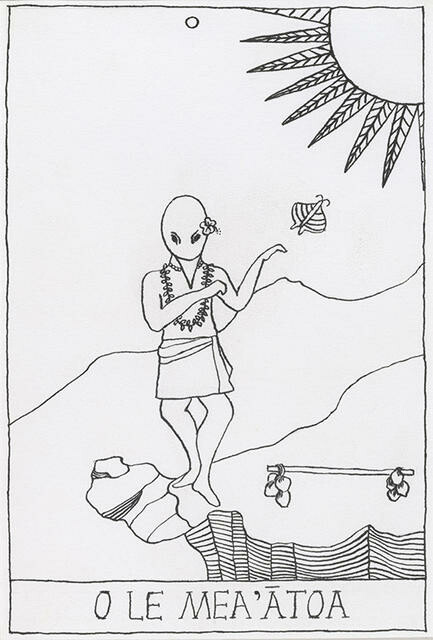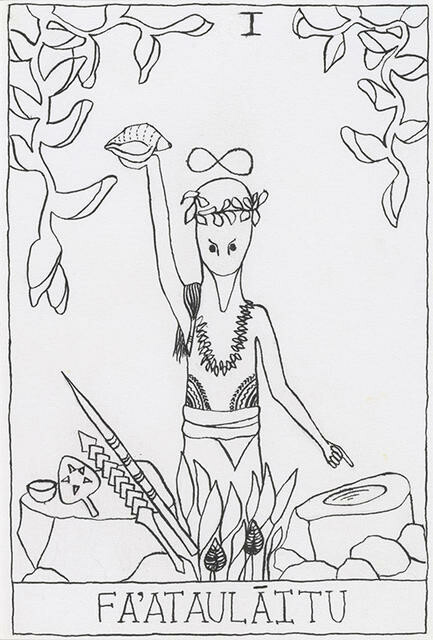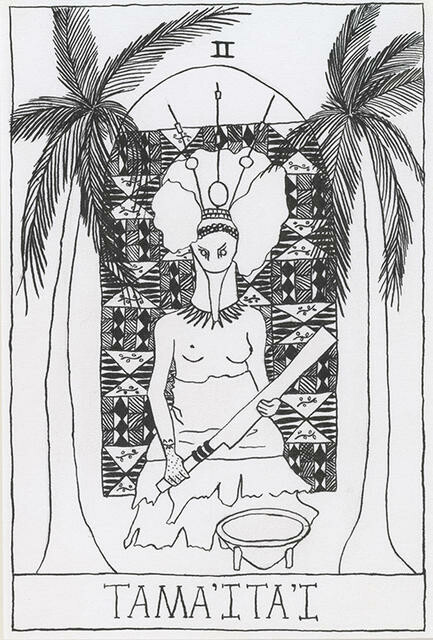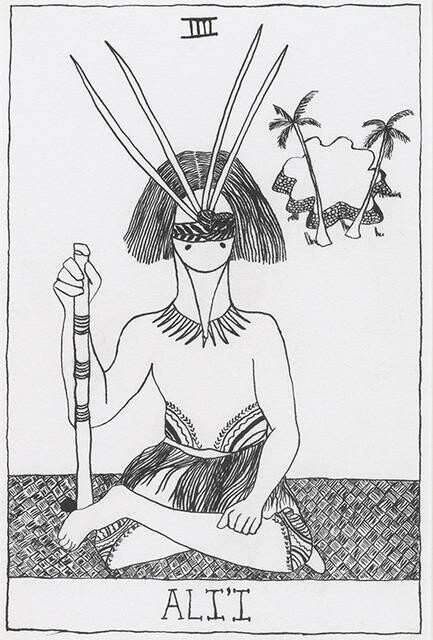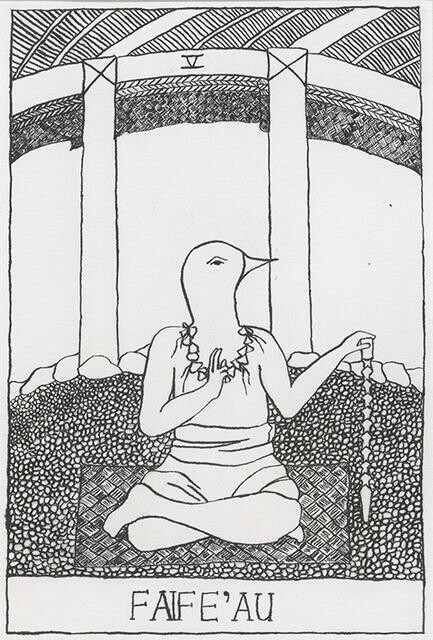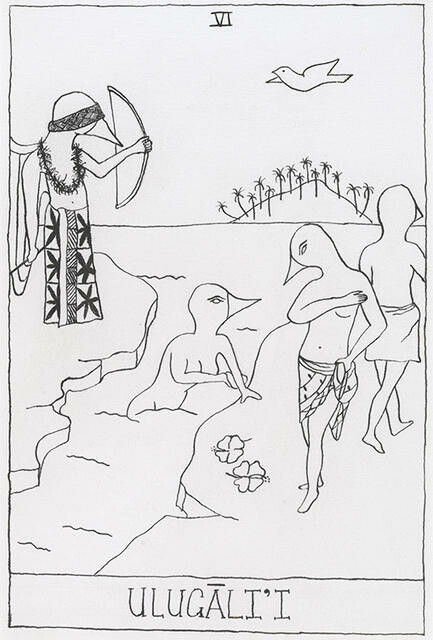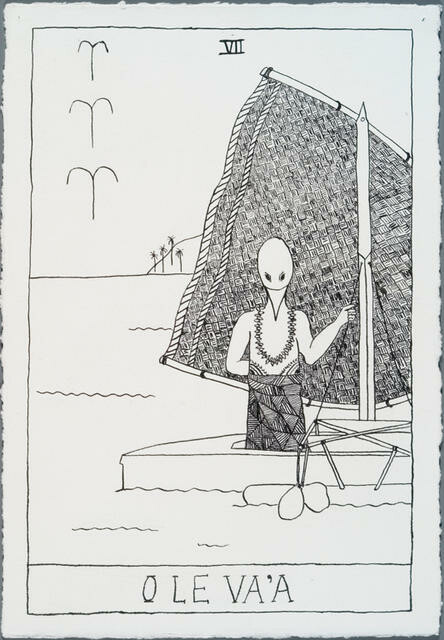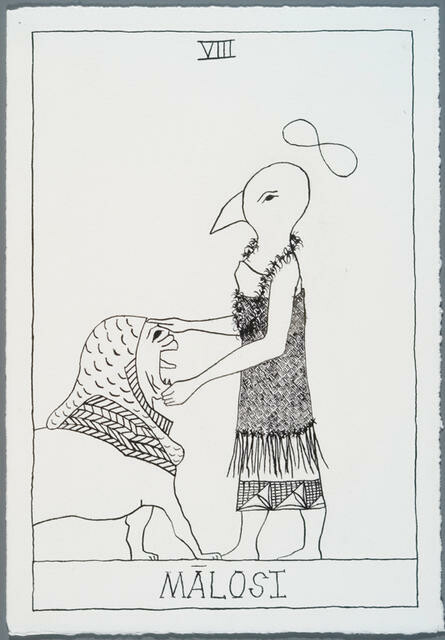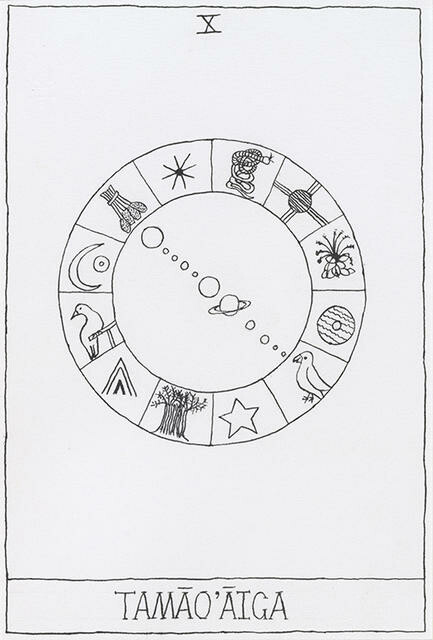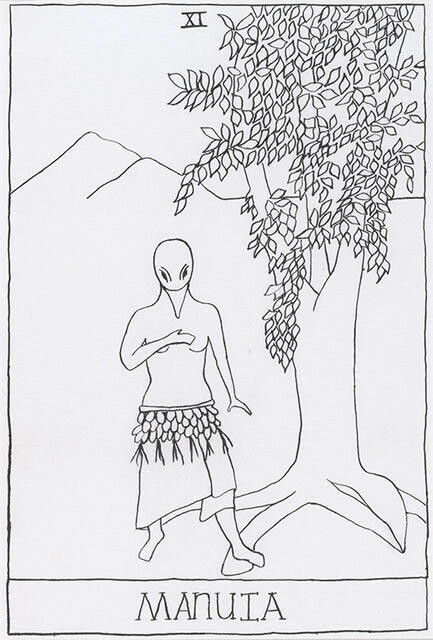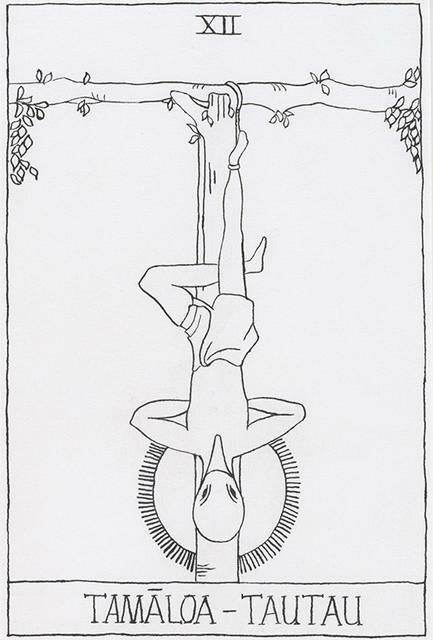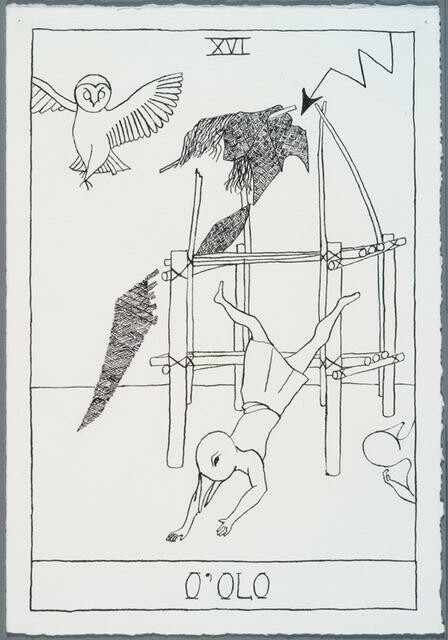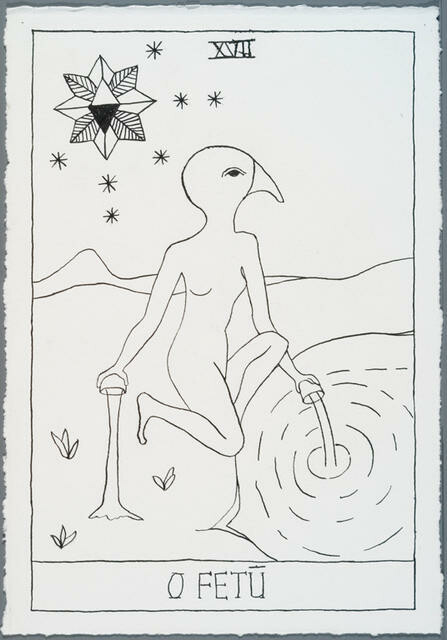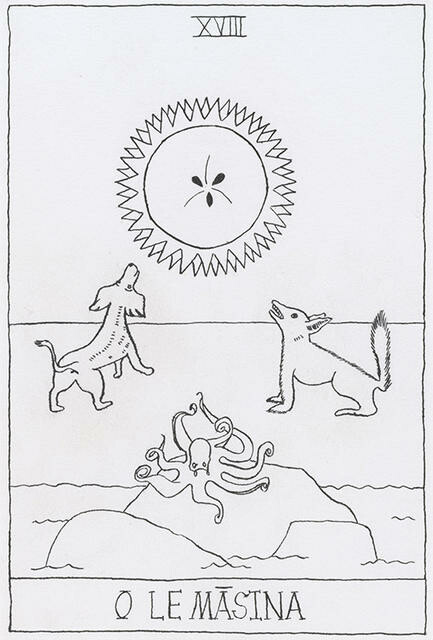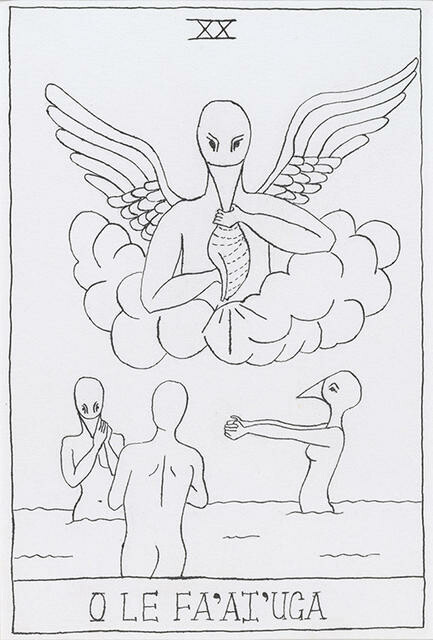Lonnie Hutchinson
Aotearoa New Zealand, b.1963
Ngāti Kuri,
Ngāi Tahu,
Sāmoan,
Māori,
Pasifika,
Scottish,
English
Pigeon Tarot
- 2003
- Ink on paper
- Purchased, 2004
- Reproduced with permission
- 255 x 175mm
- 2004/10.a-v
Tags: dancers, insects, monochrome, Oceanic, people (agents), sunbursts, suns (stars), tarot
These tarot cards use the sacred and spiritual symbol of a pigeon to commemorate the artist’s journey to Tia Seu Lupe, an ancient Samoan site of ritual whose name literally means ‘earthen mound to catch pigeons’. “No one in Samoa talks openly about pre-Christian spirituality and religion”, Lonnie Hutchinson has said. “Even the keepers of that sacred information are very wary of who they talk to. But there are coded references in proverbs and for the talking chief. We have a spiritual relationship with God, the gods, the earth, a rock, a stone.” Hutchinson often works in black, using it as a signal of transition and promise: “That’s where the magic happens; it’s a space of infinite possibilities.”
(Te Wheke, 2020)
Exhibition History
Investigating her dual cultural heritage, Lonnie Hutchinson slips easily between her Māori and Samoan identities – equally comfortable and fluent in both. Pigeon Tarot comprises 22 drawings that represent a card from the tarot deck, each with a Samoan interpretation. As a sacred and spiritual symbol, the pigeon commemorates the artist’s journey to the Samoan site of ritual and divinatory tia seu lupe (‘starmounds’). Drawing lies at the heart of Hutchinson’s practice, which is as much influenced by advertising, hip hop, graffiti art and popular culture as by Polynesian aesthetics and art forms. Lonnie Hutchinson obtained a Bachelor of Design in 1998 from Unitec, Auckland. In 2000 Hutchinson was the first female recipient of the Macmillan Brown Centre for Pacific Studies residency at the University of Canterbury, and was also a recipient of the first International Indigenous Art residency at the Banff Art Centre, in Alberta, Canada in 2003. She has exhibited in group and solo shows including Te Puāwai o Ngāi Tahu, 2003, Christchurch Art Gallery Te Puna o Waiwhetū; and Purangiaho – Seeing Clearly at Auckland Art Gallery in 2001.
